JONATHAN RILEY-SMITH is Dixie Professor of Ecclesiastical History in the University of Cambridge.
Edited by
JONATHAN RILEY-SMITH



THE inclusion of the subject of the crusades in this series of illustrated histories and the fact that only one of the contributors is from outside Britain provide an opportunity to reflect upon the phenomenal rise in the number of British crusade scholars since the early 1950s, when there cannot have been more than half a dozen, only two of whom were historians, teaching in the universities. By 19go twenty-nine history departments in British universities and colleges had members of the Society for the Study of the Crusades on their staff. The subject's strength in British academic circles probably owes most to a general public interest, a fascination with the Near East which has a long history, the reputation of St John Ambulance, which associates itself with the medieval Knights Hospitallers, and the continuing success of Sir Steven Runciman's A History of the Crusades.
This volume reflects the recent developments in crusade historiography which are described in Chapter r. It covers crusading in many different theatres of war. The concepts of apologists, propagandists, song-writers, and poets, and the perceptions and motives of the crusaders themselves are described, as are the emotional and intellectual reactions of the Muslims to Christian holy war. The institutional developments-legal, financial, and structural-which were necessary to the movement's survival are analysed. Several chapters are devoted to the western settlements established in the eastern Mediterranean region in the wake of the crusades, to the remarkable art and architecture associated with them, and to the military orders. The subject of the later crusades, including the history of the military orders from the sixteenth to the eighteenth centuries, is given the attention it deserves. And the first steps are taken on to a field that is as yet hardly explored, the survival of the ideas and images of crusading into the nineteenth and twentieth centuries.
JONATHAN RILEY-SMITH
Croxton, Cambridgeshire
April, 1994
ix
xi
facing page




 N November 1095 a church council was meeting in Clermont under the chairmanship of Pope Urban II. On the 27th, with the council coming to an end, the churchmen, together with some lay people mostly from the countryside around, assembled in a field outside the town and the pope preached them a sermon in which he called on Frankish knights to vow to march to the East with the twin aims of freeing Christians from the yoke of Islamic rule and liberating the tomb of Christ, the Holy Sepulchre in Jerusalem, from Muslim control. As soon as he had finished Adhemar of Monteil, the bishop of Le Puy who was to be appointed Urban's representative on the expedition, came forward and was the first to take the cross, while the crowd called out `God wills it!' Although the eyewitness accounts of this assembly and the pope's sermon were written later and were coloured by the triumph that was to follow, they give the impression of a piece of deliberate theatre-a daring one, given the risk involved in organizing an out-of-doors event at the start of winter-in which the actions of the leading players and the acclamation of the crowd had been worked out in advance.
N November 1095 a church council was meeting in Clermont under the chairmanship of Pope Urban II. On the 27th, with the council coming to an end, the churchmen, together with some lay people mostly from the countryside around, assembled in a field outside the town and the pope preached them a sermon in which he called on Frankish knights to vow to march to the East with the twin aims of freeing Christians from the yoke of Islamic rule and liberating the tomb of Christ, the Holy Sepulchre in Jerusalem, from Muslim control. As soon as he had finished Adhemar of Monteil, the bishop of Le Puy who was to be appointed Urban's representative on the expedition, came forward and was the first to take the cross, while the crowd called out `God wills it!' Although the eyewitness accounts of this assembly and the pope's sermon were written later and were coloured by the triumph that was to follow, they give the impression of a piece of deliberate theatre-a daring one, given the risk involved in organizing an out-of-doors event at the start of winter-in which the actions of the leading players and the acclamation of the crowd had been worked out in advance.
The crusading movement had begun in the melodramatic fashion which was to be typical of it thereafter. Coming himself from the class he wished to arouse, the pope must have known how to play on the emotions of armsbearers. Now about 6o years old, he had embarked on a year-long journey through southern and central France. The summoning of an expedition to the aid of the Byzantine empire had probably been in his mind for several years and it had been aired at a council held at Piacenza in March which had heard an appeal from the Byzantine (Greek) emperor Alexius for aid against the Turks, who for over two decades had been sweeping through Asia Minor and had almost reached the Bosphorus. Soon after Urban had entered French territory he must have discussed his plans with Adhemar of Le Puy and with Raymond of St Gilles, the count of Toulouse, whom he wanted as military leader. These meetings cannot have been confidential and there may have been some truth in a tradition in Burgundy that `the first vows to go on the way to Jerusalem' were made at a council of thirty-six bishops which had met at Autun earlier in 1095. Another tradition was that the wandering evangelist Peter the Hermit was already proposing something similar to the crusade before it was preached at Clermont. Peter was congenitally boastful and the stories of his pilgrimage to Jerusalem, the appeal to him by the patriarch, his vision of Christ, and his interview with the pope in Italy at which he persuaded Urban to summon men to Jerusalem's aid seem to have originated in Lorraine, not far from the abbey of Neumoustier where he lived once the crusade was over. But at the very least there must have been a lot of talk and some preliminary planning in advance of the pope's arrival at Clermont.
Urban seems to have followed up his proclamation by preaching the cross wherever he went in France. By the following spring crusaders were assembling for what came to be known as the First Crusade (1096-1102), the climax of which was the capture of Jerusalem on 15 July 1099, an achievement made all the greater for contemporaries by the catastrophic defeat by the Turks in Asia Minor two years later of the armies of a third wave of crusaders.
Jerusalem could not be held in isolation and its capture inevitably led to the establishment of western settlements in the Levant (which are known collectively as the Latin East). These soon came under pressure and military expeditions had to be organized, and military orders were founded, to assist them. Crusades were in action in 11o7-8-although this was diverted into a preliminary and disastrous invasion of the Byzantine empire-112o-5, 1128-9, 1139-40, and 1147-9; the last of these came to be known as the Second Crusade. Meanwhile, the movement had been extended to Spain, the reconquest of which from the Moors had already been equated with the liberation of Jerusalem by Pope Urban II. Crusades in the peninsula were preached in 1114, 1118, and 1122, when Pope Calixtus II proposed a war on two fronts with armed forces serving concurrently in Spain and in the East. Calixtus's initiative was developed by Pope Eugenius III in 1147 when he authorized a crusade against the Wends across the north-eastern German frontier at the same time as crusaders were being called to serve in Spain and Asia. The Second Crusade was a fiasco, and although there were three further crusades in Spain before 1187, one in northern Europe, and a few expeditions, notably that of 1177, to Palestine, the thirty years that followed were in many ways the lowest point the movement reached before the fifteenth century.

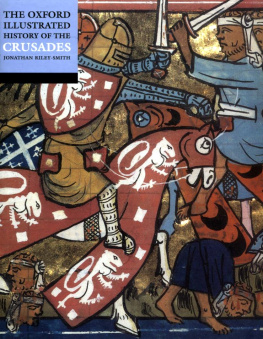


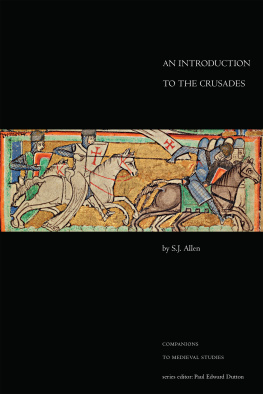
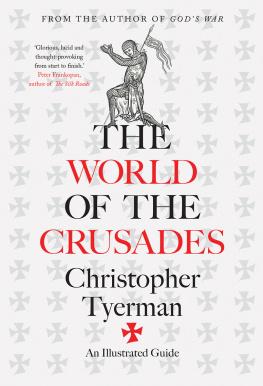

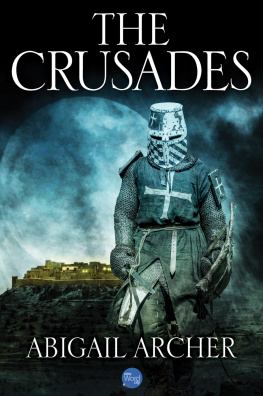
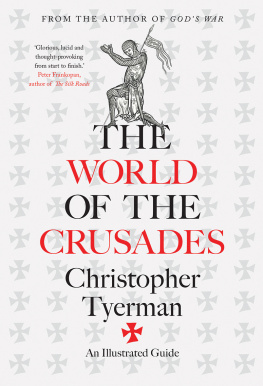
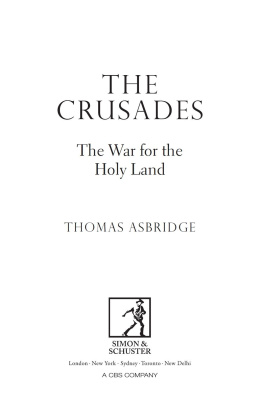
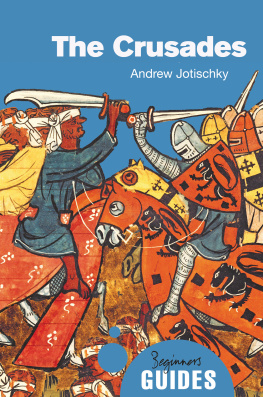
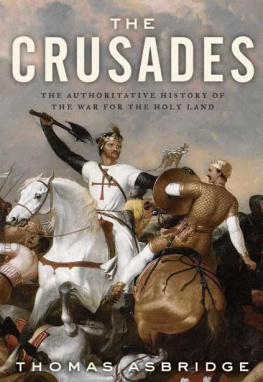
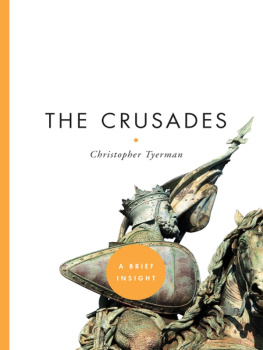


 N November 1095 a church council was meeting in Clermont under the chairmanship of Pope Urban II. On the 27th, with the council coming to an end, the churchmen, together with some lay people mostly from the countryside around, assembled in a field outside the town and the pope preached them a sermon in which he called on Frankish knights to vow to march to the East with the twin aims of freeing Christians from the yoke of Islamic rule and liberating the tomb of Christ, the Holy Sepulchre in Jerusalem, from Muslim control. As soon as he had finished Adhemar of Monteil, the bishop of Le Puy who was to be appointed Urban's representative on the expedition, came forward and was the first to take the cross, while the crowd called out `God wills it!' Although the eyewitness accounts of this assembly and the pope's sermon were written later and were coloured by the triumph that was to follow, they give the impression of a piece of deliberate theatre-a daring one, given the risk involved in organizing an out-of-doors event at the start of winter-in which the actions of the leading players and the acclamation of the crowd had been worked out in advance.
N November 1095 a church council was meeting in Clermont under the chairmanship of Pope Urban II. On the 27th, with the council coming to an end, the churchmen, together with some lay people mostly from the countryside around, assembled in a field outside the town and the pope preached them a sermon in which he called on Frankish knights to vow to march to the East with the twin aims of freeing Christians from the yoke of Islamic rule and liberating the tomb of Christ, the Holy Sepulchre in Jerusalem, from Muslim control. As soon as he had finished Adhemar of Monteil, the bishop of Le Puy who was to be appointed Urban's representative on the expedition, came forward and was the first to take the cross, while the crowd called out `God wills it!' Although the eyewitness accounts of this assembly and the pope's sermon were written later and were coloured by the triumph that was to follow, they give the impression of a piece of deliberate theatre-a daring one, given the risk involved in organizing an out-of-doors event at the start of winter-in which the actions of the leading players and the acclamation of the crowd had been worked out in advance.